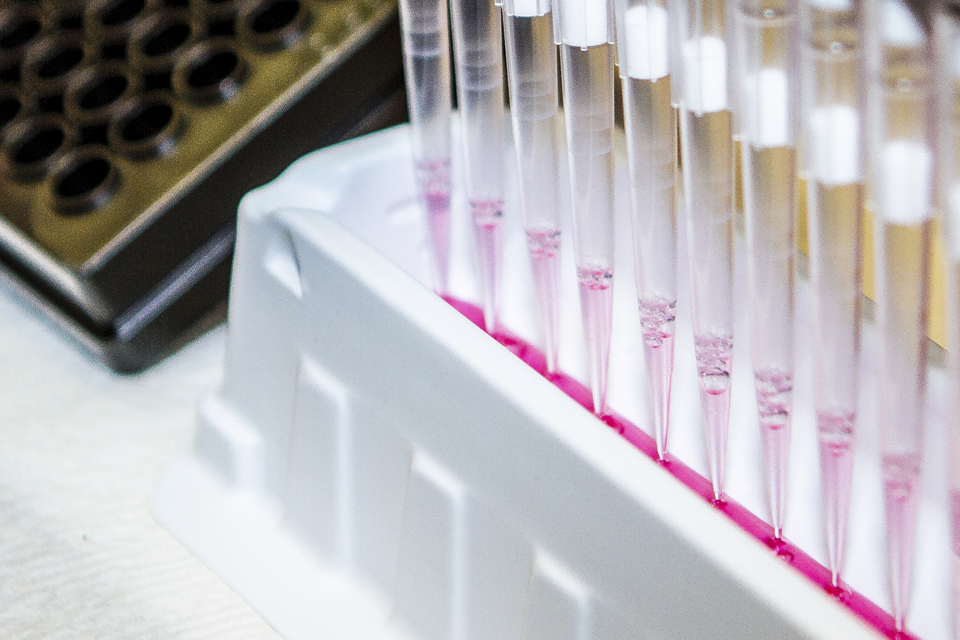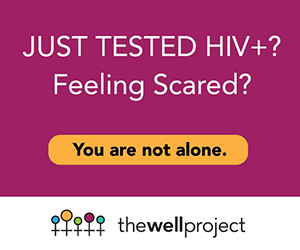
Table of Contents
- Lab Tests Are Important Tools
- Viral Load Test
- Resistance Test
- Tropism Test
- Hypersensitivity Test for Abacavir
- Bottom Line
Lab Tests Are Important Tools
Having regular lab tests is a necessary part of caring for your health. If you are living with HIV, lab tests are especially important tools that help you and your healthcare provider keep track of how you are doing in the following areas:
Immune system status
- How HIV is affecting your immune system
- If you need to start or change HIV drugs
- Example of lab test: CD4 count (see our fact sheet on Understanding CD4 Cells and CD4 Cell Tests)
Overall health
- How your body's organ systems are functioning
- If you have side effects from the drugs
- If you are having problems not related to HIV
- Examples of lab tests: complete blood count, blood chemistry tests, blood fat and sugar tests (see our fact sheet on Understanding Lab Tests I: Complete Blood Count and Blood Chemistry)
HIV health
- How HIV is responding to the drugs you are taking
- Which drugs to use
- The specific characteristics of your virus
- Examples of lab tests: viral load test, resistance test, tropism test (explained below)
Viral Load Test
Viral load is the amount (number of copies) of HIV in your bloodstream. There are several different types of lab tests that measure viral load. All these tests are accurate, but each has a different way of measuring the amount of virus. It is best to stick with the same kind of test and not switch among them or it will be more difficult to compare results over time.
Being undetectable is a great result because it means your virus is under control.
Viral load results are reported as copies of HIV in one milliliter of blood. The lower the number, the less virus there is in your blood. Numbers can range from about one million copies to as few as 50 copies. If you have fewer than 50-200 copies, your healthcare provider may tell you that your results are "undetectable."
Being undetectable is a great result because it means your virus is under control. The good news is that studies have shown that having an undetectable viral load prevents a person living with HIV from transmitting HIV to their sexual partners. However, undetectable does not mean you have been cured of HIV.
Having an undetectable viral load means that there is not enough HIV in your bloodstream for the test to measure. It is also important to know that labs that test viral load have different cut-offs for detecting HIV. For example: you could have 35 copies of HIV in your blood, and in lab #1, which cannot detect any HIV below 50 copies, your viral load would be considered 'undetectable.' However, in lab #2, which cannot detect any HIV below 20 copies, your viral load would be considered detectable, and the lab would report that you have a viral load of 35.
Practically speaking, if you stay at or below 50-200 copies, the virus is considered well controlled, and your HIV treatment regimen is working well.
Viral load tests are an important tool to:
- Check HIV progression
When compared over time, viral load results show if the amount of HIV in your bloodstream is higher or lower than it was before. The higher your viral load, the greater the chances that your immune system is being damaged. - Measure how well HIV drugs are working
HIV drugs work by preventing the virus from making copies of itself (multiplying or reproducing). When a combination of HIV drugs (your drug regimen) is working, the viral load usually goes down within weeks of starting the drugs. If your viral load goes up while taking HIV drugs, your drugs may not be working as well as they should.
One goal of HIV treatment is to keep viral load levels as low as possible for as long as possible. This gives you the best chance of staying healthy. With effective HIV treatment regimens, viral load can be reduced to undetectable levels in many people. This is a great result. It means that your HIV drugs are working, and you are doing a great job taking them. However, HIV is still in your body, hiding in an inactive state and not reproducing. If you stop taking your HIV drugs, the virus usually comes out of hiding and starts reproducing (making copies of itself); then your viral load will go up.
When Should You Get a Viral Load Test?
- If you are not on HIV treatment, have a viral load test
- When you start receiving HIV care
- When you start treatment, have a viral load test
- When starting and two to eight weeks after treatment was started
- Repeat test every one to two months until viral load becomes undetectable
- When starting and two to eight weeks after treatment was started
- Once you are on a stable treatment regimen and undetectable, have a viral load test
- Every three to six months
- When you change HIV drugs, have a viral load test
- Two to eight weeks after treatment was changed
- Repeat test every one to two months until viral load becomes undetectable
- Two to eight weeks after treatment was changed
If your drug regimen is working, your viral load should become undetectable within six months of starting treatment. If this does not happen, if your viral load stays detectable on stable therapy, or if your viral load keeps increasing, this can mean that your drug regimen is not controlling HIV as well as it should. It is important that you and your healthcare provider discuss all possible reasons (e.g., problems with your body's ability to absorb the drug, problems sticking to your regimen, forgetting to take your drugs, drug resistance, or interaction with other drugs) and take steps to correct the problem. These steps may include additional testing and considering changing your HIV drugs.
Resistance Test
HIV drugs are designed to keep your viral load under control by preventing the virus from reproducing (making copies of itself). Sometimes HIV changes, or mutates, as it makes copies of itself. These changes may allow the virus to overcome the effects of a drug and keep reproducing. When this happens, we say HIV has developed resistance to that drug.
Resistance decreases the ability of HIV drugs to control your virus and reduces your treatment options. The best way to prevent resistance is to stick closely (adhere) to your HIV drug regimen and not miss any doses. With good adherence, resistance is less likely to develop.
Drug resistance tests are used to determine whether your virus has developed resistance to some HIV drugs, and these drugs are not working. Several types of resistance tests are available.
- Genotype test
This test uses HIV from your blood to check for mutations – changes in the virus's genetic sequence or genetic code – associated with drug resistance - Phenotype test
This test exposes your virus to many HIV drugs in a test tube to determine which ones still work against your HIV and to what extent they work. Whereas genotype testing gives a ‘yes’ or 'no' answer on resistance to certain HIV drugs, phenotype testing gives information on how much, or the degree to which, your HIV is resistant to specific HIV drugs. - Virtual phenotype test
This is a genotype test that goes one step further – it involves performing a genotype test and then using phenotype information from a database to predict which drugs will be effective against your virus (taking into account its mutations)
In most cases, the genotype is the preferred test. For people who have been on HIV treatment before and may have HIV that is resistant to a number of different drugs, including protease inhibitors, the phenotype test may be done in addition to the genotype.
When Should You Get a Resistance Test?
Resistance testing is recommended for people who have:
- just been diagnosed as living with HIV, whether or not they are going to take HIV drugs right away. Note: Guidelines recommend that people start HIV drugs immediately after being diagnosed.
- never taken HIV drugs and are starting to receive medical care, whether or not they are going to take HIV drugs right away. Note: Guidelines recommend that people start HIV drugs immediately.
- never been on HIV drugs and are planning to start
- seen their viral load go up despite being on HIV drugs
- recently started HIV drugs and their viral load is not coming down enough
- become pregnant while living with HIV and who have a detectable viral load of more than 500 copies
Resistance testing is not usually recommended for:
- people who have stopped HIV drugs for four weeks or more
- people with a viral load below 500-1,000 copies
Resistance tests are helpful when choosing a drug regimen, but the tests are only a guide. Other factors, such as past medications, side effects, and adherence, must also be taken into account.
Tropism Test
Tropism describes the way HIV infects CD4 cells. One HIV drug, Selzentry (maraviroc), only works in people whose HIV has a certain tropism (is CCR5 tropic). Tropism testing finds out whether someone's HIV is CCR5 tropic. The test and drug are rarely used in the US today.
When Should You Get a Tropism Test?
Tropism testing lets your healthcare provider know if you have CCR5 tropic virus, or the type of HIV that will be blocked by CCR5 antagonists (entry inhibitors). It is important that you have this test if you are thinking of starting a CCR5 antagonist. At this point, there is only one CCR5 antagonist available called Selzentry (maraviroc), but there are others in development.
Hypersensitivity Test for Abacavir
The HIV drug abacavir (brand name Ziagen; also found in the combination pills Epzicom, Triumeq, and Trizivir) can cause life-threatening reactions similar to severe allergic reactions in some people. People who are hypersensitive are those who have abnormally large or severe allergic responses to a substance (in this case, abacavir). Symptoms of hypersensitivity include rash, fever, fatigue, nausea, vomiting, stomach pain, sore throat, cough, and shortness of breath.
People with a certain gene called HLA-B*5701 are at risk for developing this excessive and severe reaction. Consequently, the US Department of Health and Human Services (DHHS) recommends being tested for HLA-B*5701 before beginning treatment with abacavir.
When Should You Get a Hypersensitivity Test?
If you and your healthcare provider are thinking about beginning treatment with abacavir, or any combination pill that contains abacavir, it is important for you to get the HLA-B*5701 blood test. If you are found to have the HLA-B*5701 gene, the DHHS recommends that you not take abacavir.
Bottom Line
Regular lab tests are very important in the management of your health and your HIV. Speak to your healthcare provider about when you need to take the tests described above and how they can be used to help you make decisions about which HIV drugs are best for you.



